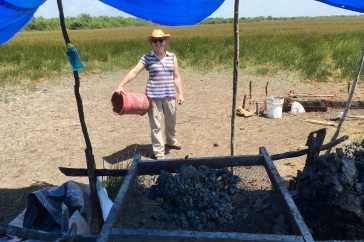
More than half of children in high-risk populations in the United States are not receiving behavioral health services that could improve their developmental outcomes when it comes to mental and physical health problems, according to new UNH research.
In their study, recently published in JAMA Network Open, researchers from UNH’s Crimes against Children Research Center (CCRC) looked at a national cross section of 11,896 young children and teens. They focused on those with high levels of adverse childhood experiences (ACEs), high distress symptoms or both — for example, children with symptoms like depression, anxiety, anger, post-traumatic stress and dissociation. Data was collected before the coronavirus pandemic; the researchers used National Surveys of Children’s Exposure to Violence (NatSCEV) from 2008, 2011 and 2014.
“Lots of kids are suffering from problems we have solutions for. We just have to up our game and get it to them.”
“These findings show a large percentage of children who need it are not getting treatment,” says study author David Finkelhor, CCRC director and professor of sociology. “Better ways are needed to identify these at-risk youth populations and help them get intervention resources that we know improves their physical and mental health.”
Finkelhor and his co-authors, professor of sociology Heather Turner and sociology doctoral student Dierdre LaSelva, found the untreated portion of high-risk juveniles ranged between 41% to 63%. Among those aged two to nine years, no clinical services were reported for 57% of the group with high ACEs and 53% of the group with high distress symptoms. Among those aged 10 to 17 years, the no clinical contact group comprised of 63% of the adolescents with high ACEs and 52% of those with high distress symptoms.
The researchers say the group receiving the least number of services was young Black children with significantly lower levels of clinical contact compared with non-Hispanic white children.
“There are lots of barriers to receiving these services,” says Finkelhor. ”For example, there is a dearth of services or long waiting times in some areas. Some schools and medical providers do a better job than others of identifying need and making referrals. Some families can’t access care because they lack transportation or time and some find the idea of such services stigmatizing or have had bad experiences in the past.”
According to the researchers, making such services more easily accessible in familiar places like schools and medical practices has been shown to increase service utilization.
“Lots of kids are suffering from problems we have solutions for,” said Finkelhor. “We just have to up our game and get it to them.”
The research was supported by grants from the Office of Juvenile Justice and Delinquency Prevention at the U.S. Department of Justice.
-
Written By:
Robbin Ray ’82 | UNH Marketing | robbin.ray@unh.edu | 603-862-4864

















































